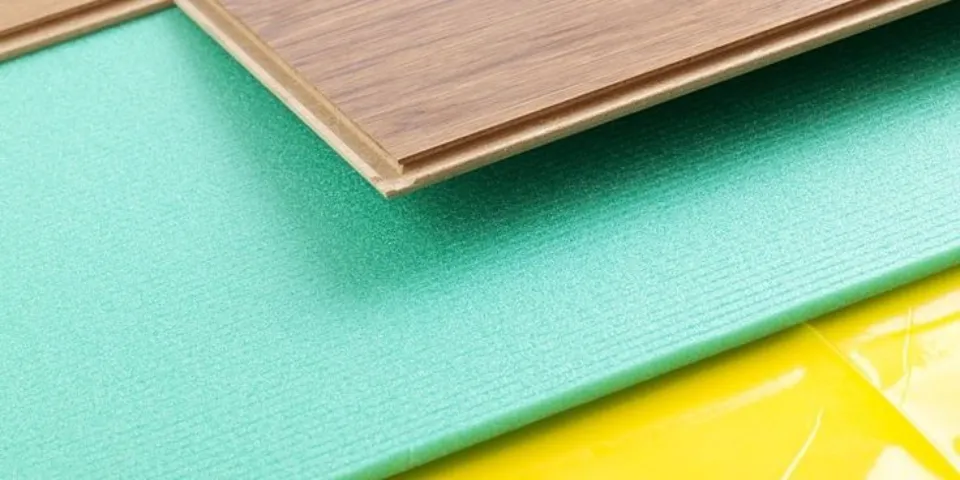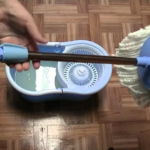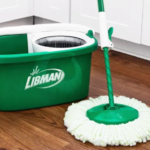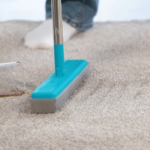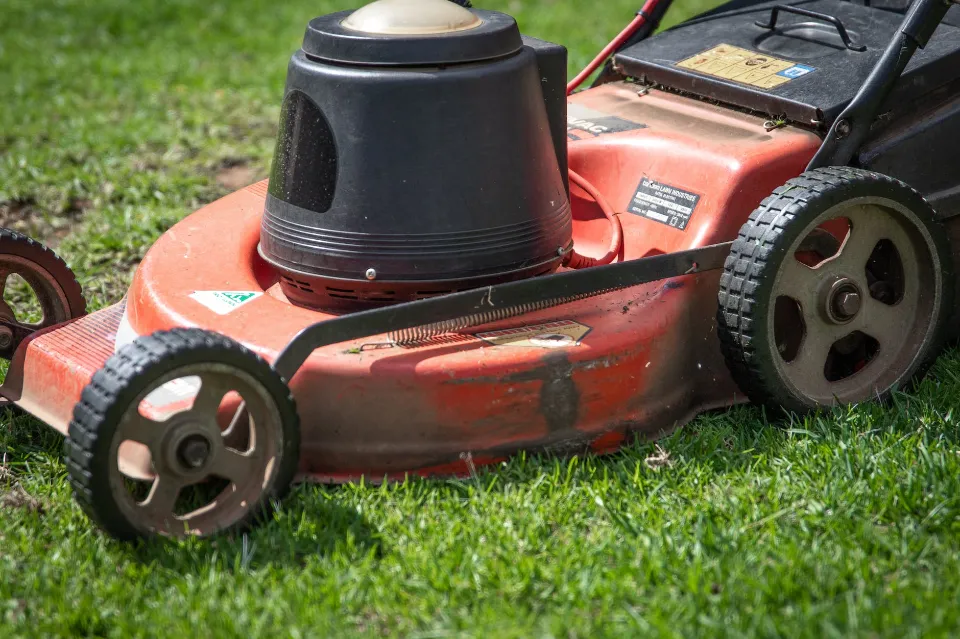You can achieve the expensive, polished appearance of a hardwood floor without the expense by installing laminate hardwood flooring in your home. For professional results to last, however, the laminate floor must be correctly installed with a quality underlayment beneath it. By absorbing sound, shielding it from moisture, and providing the best thermal insulation, the underlayment offers adequate support for laminate flooring. Your underlayment determines the longevity of your laminate and minimizes the need for frequent floor repairs or maintenance. (Read More: 10 Best Mop For Laminate Floors – Best Ways to Clean)
So, which underlayment material is the best choice for a laminate floor? While there are many excellent options available, cork and foam are frequently preferred for a laminate floor underlay. Cork’s thickness and sound absorption may be a plus for you depending on your lifestyle; foam, on the other hand, is a great, affordable material that serves as a moisture barrier.
What is Flooring Underlayment?
Around 12 mm thick is the typical thickness of laminate flooring. It is intended to resemble a polished wood floor without the cost or ongoing maintenance. It is safe to assume that you will require an underlayment unless your laminate or vinyl plank flooring already has one attached, particularly in the basement, kitchen, and bathroom.
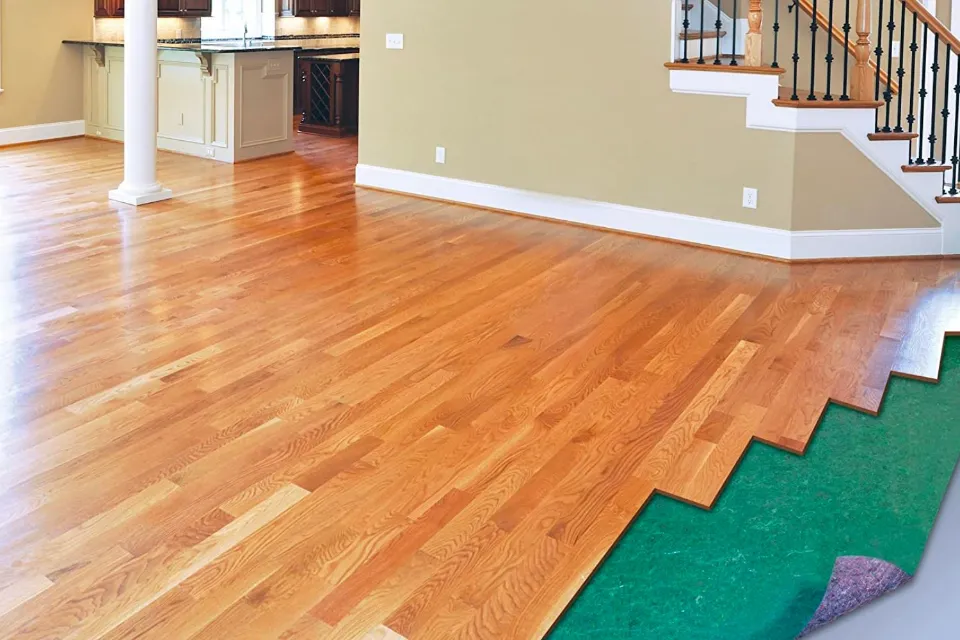
Between a new laminate floor and the subfloor, the laminate underlayment serves as a protective barrier. A premium underlayment is usually around 2 mm – 3 mm thick, with 3 mm providing thick cushioning and insulation without compromising the joints between boards. Made of rubber, cork, rubber cork, felt, or foam, flooring underlayment is made with two layers; one layer provides cushioning while the other serves as a vapor barrier against mold growth and moisture. A typical underlay would also have adhesive tape attached so you could quickly and securely attach the material to the subfloor with no gaps.
You might be more accustomed to flooring types like tile, solid hardwood (Also Read: How to Repair Hardwood Flooring with Simple Steps), or engineered wood that don’t require an underlayment. However, since these floating floors are not nailed or glued down, laminate floors require them. They require a cushion between the subfloor and the floor to float easily, especially because they are prone to expanding and contracting in response to temperature changes. The flooring underlayment supports floating laminate floors by:
- Acting as a vapor barrier to prevent moisture from seeping in through the subfloor
- Smoothing friction of movement to keep the floor together when temperature shifts occur
- Adding thickness to absorb sound from foot traffic, preventing creaking or squeaking noises
- Adding warmth, softness, and a ‘squish’ to each step, softening falls
- Providing more stability to the floor by ensuring locks between planks are well-supported
- Hiding imperfections in the subfloor, ensuring the vinyl plank floor lays correctly over it
Is Laminate Flooring Underlayment Important?
One cannot overstate how important it is. INSTALLFloors.org says, “The most crucial component of any flooring project, whether it be for a home or business, is undoubtedly the underlayment and subfloors. For any type of flooring to wear well and be stable, underlayments and subfloors must be chosen and installed properly.
How Does Laminate Flooring Underlayment Work?
Underlayment does two things that are critical to a successful laminate flooring installation:
- Any small subfloor irregularities are eliminated by the underlayment.
- If your laminate flooring planks already have an underlayment pad attached, do not use additional underlayment as doing so will void your Swiss Krono warranty. Underlayment provides superior acoustical performance.
Why is Laminate Flooring Underlayment Needed?
Think of flooring underlayments as the protective barrier between your floating flooring and subfloor. This layer provides a soft cushioned step, noise reduction when walking on your new floors, moisture protection for your floating floor, and can even out some subfloor irregularities.
It is an essential element of any installation of floating engineered hardwood or laminate flooring.
To protect your flooring, flooring underlayment functions as a thin foam pad. Your subfloor is raised above laminate flooring. Installing and fixing it is simple because it is not glued or nailed down. It is put together like a puzzle when laminate flooring is installed. In this manner, your flooring moves as a single piece when it expands and contracts due to changes in temperature and moisture. When it shifts, the foam underlayment acts as a barrier against friction and other harmful elements.
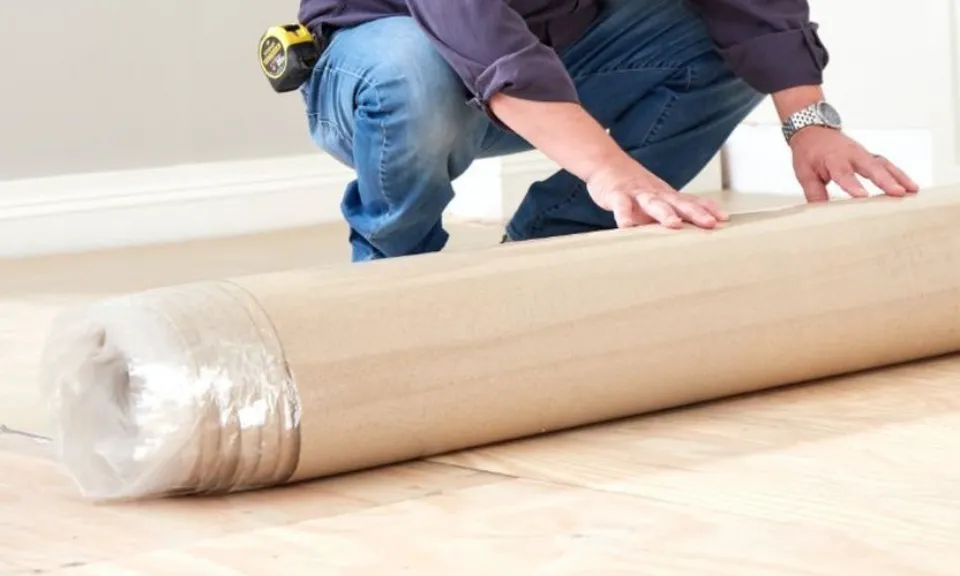
6 Things to Consider When Choosing a Laminate Floor Underlay
Not every laminate underlayment is created equal because different manufacturers offer a variety of fantastic features that you might or might not need. In order for your laminate flooring to last as long as it should, it’s critical to purchase the best laminate underlayment. How then do you decide between the available options? Here are six factors you should take into account:
1. Thickness
When it comes to underlayment, thickness is a feature that most customers find challenging. The underlayment’s thickness isn’t actually the most crucial factor to take into account. An extra thick underlayment only works if you’re installing carpeted flooring or trying to smooth an uneven subfloor. Otherwise, an underlayment with extra padding can cause laminate or vinyl flooring to flex too much, which may break the locking system. Find an laminate underlayment that is around 2 – 3 mm thick; some distributors may falsely claim that a 6 mm underlay can double sound absorption. Density and material, however, serve as better measures of soundproofing.
You don’t need to install a new underlayment if your laminate flooring already has one attached because this attachment is there to save you time. However, if you’re installing over a concrete subfloor, you might need to add a vapor barrier because an attached underlayment typically doesn’t have one.
2. Subfloor Type
Installing an underlayment is essential if a laminate plank will be placed over a concrete subfloor because concrete is porous and retains moisture. Putting in a vapor barrier against the moisture released by a concrete floor is essential to prevent possible damages to your floor. On the other hand, if you’re installing the laminate flooring over a plywood subfloor, you won’t need to worry about moisture. Look for an underlayment with better noise reduction and thermal ratings rather than a vapor barrier.
3. Thermal Ratings
Each kind of underlayment is given an R-value, which is a numerical rating of how well it insulates. Less insulation is equivalent to a lower R-value, and less heat will pass through the underlay at a higher R-value. If you reside in a climate that necessitates the installation of a floor heating system, you might want to look for an underlayment with a high R-value to provide additional underfloor heating throughout the winter. A good R-value for underlayments can also help in the summertime to keep hot air out. R-values of 2 or 3 are typical for underlayments, for comparison.
4. Sound Absorption
While laminate flooring is generally quiet underfoot, it can become noisy if it flexes against the subfloor. Without an underlayment, the noise can be transferred to the floor below. A good underlayment would serve as a noise-reducing buffer between the two surfaces, sparing you from annoying creaks or squeaks when you walk by.
An underlayment with sound absorption features are also a must if you have neighbors below. A minimum sound rating underlayment is needed in apartment and condo complexes to avoid conflicts. For underlayments, there are two sound absorption ratings:
- Sound Transmission Class (STC) – measures the ability of the material to block airborne noises
- Impact Insulation Class (IIC) – measures how well the material can block impact noises like drops, footsteps, or furniture being moved
The ratings for STC and IIC range from 15 to 80. The better the material can reduce sound, the higher the number. A typical wood floor would have an STC rating of 40 while a hardwood floor without sound insulation would have an IIC rating of 45. The STC and IIC ratings of a product should be 60 or higher for the best sound absorption.
5. Cost
The pricing of floor underlayments varies greatly because they are typically sold by square footage or in rolls. Rolls can be cost-friendly for larger projects, but it may be safer to buy in square foot to avoid excess. It’s a good idea to compare your budget to the underlayment’s price, brand, and number of features before making a decision. In some places, it’s simple to find high-quality underlayment for less than $0.15 per square foot.
6. Antimicrobial Benefits
Some materials, like cork, have built-in antimicrobial properties. However, some underlayments are produced with added antimicrobial benefits. Finding an underlayment with this feature would be ideal if you want to make the installation of your laminate floor healthier, provided that it is suitable for your flooring requirements and the environment in which you live.
Different Types of Laminate Underlayment
Even if you are aware of the characteristics a laminate underlayment should have, you might be daunted by the variety of materials available. Among the four most common underlayment options, here’s what you need to know:
1. Foam
A foam underlayment is the most basic variety of laminate floor underlayment. Foam underlayments are a thin, 1/8-inch-thick layer of foam material. They rank among the most readily available, adaptable, and cost-effective kinds of underlayment. Even though foam underlayment is inexpensive, it can provide a great cushion between the subfloor and a vinyl, engineered hardwood, or laminated floor.
A combination foam with a vapor barrier attachment has been developed by some manufacturers because the typical foam underlayment is not the best vapor barrier for high moisture areas. Even though combination foam underlay may cost more, it can be used successfully in kitchens, bathrooms, and basements with subfloors made of plywood, OSB, or concrete.
2. Felt
If you’re looking for something environmentally friendly, felt underlayment is a great option. Made from recycled fibers, felt underlayments are denser than foam. They are useful for increasing sound absorption, enhancing home insulation, and improving floor comfort. Some felt underlayment brands can be used for a variety of flooring types, including laminate, vinyl, and hardwood, because they have an integrated moisture barrier to shield the floor from spills.
3. Rubber
An incredibly adaptable and simple-to-install option for floor padding is a rubber underlayment. Rubber can shield your laminate flooring from any mold, mildew, or noise associated with a concrete or wood subfloor as it is one of the most sound-absorbing and insulating underlayments on the market. Since recycled rubber products are used to make rubber underlayments, they are excellent if you care about the environment.
Rubber underlays only have one drawback: they cannot be used on vinyl floors because they stain; rubber is more frequently used with wood, tile, or carpet floors. A hybrid underlayment made of rubber and cork that has been developed by some manufacturers expertly prevents tile cracks brought on by natural movement and house settling.
4. Cork
When a soundproof underlayment is a top priority, cork is frequently chosen as the material. Because cork is a natural material with sufficient spring and density, it can withstand pressure and weight without deforming. You won’t have to worry about mold growth between your subfloor and vinyl or laminate flooring thanks to the good insulation and inherent antimicrobial properties of cork underlayment. Placing a sheet of plastic under the cork underlay is a simple way to improve your moisture barrier.
Cork may not be the most comfortable underlay to walk over, but it can help even out any subfloor imperfection on surfaces between rooms. The biggest drawback of cork underlayment is its price; using cork could result in a 50% increase in the cost of installing a floor.
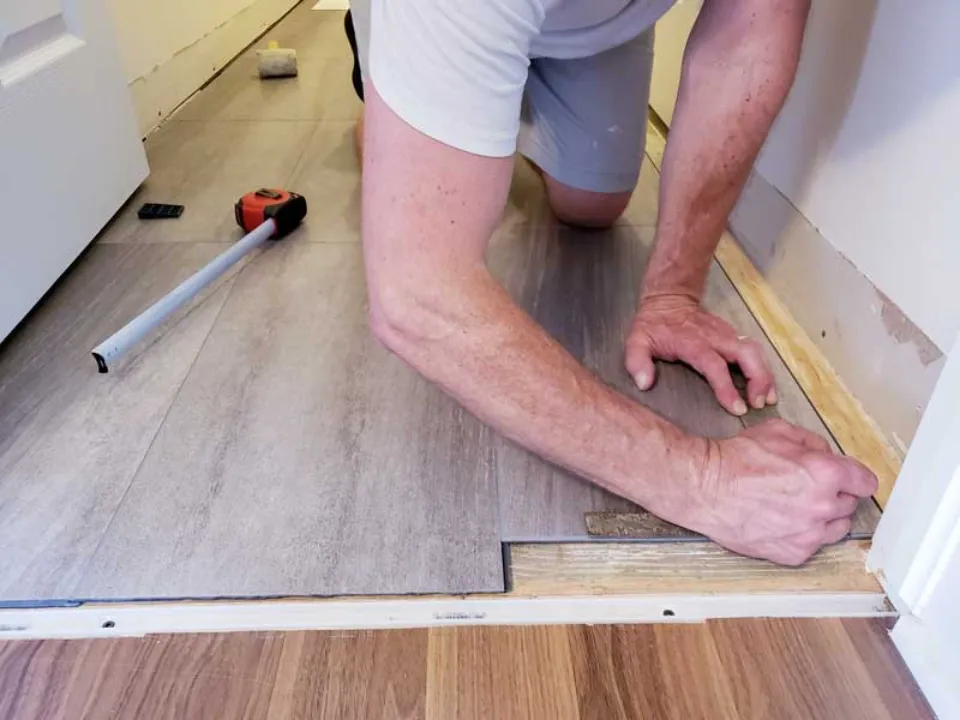
Can You Use Carpet Underlay for Laminate Flooring?
Reusing your underlay might seem appealing, but pairing laminate flooring with carpet underlay will lead to long-term issues.
Typically, carpet underlay is thicker than laminate underlay. In comparison to laminate underlay, which is typically 3mm thick, it is typically 10mm thick.
Installing laminate over a carpet underlay will result in a floor that is too bouncy and spongy, which could harm the locking mechanism and make the room feel uncomfortable.
How to Lay Laminate Flooring Underlay
Once you’ve chosen the best underlay for your laminate flooring, you can either use a professional installer or install it yourself.
Using a professional installer will ensure the best results if you aren’t confident in your abilities.
But if you prefer to handle it on your own, here’s how.
Laying the underlay first, before installing any skirting boards, will produce the best results. Or, if you already have skirting boards, you should remove them.
As a result, you will be able to install the skirting boards over the underlay and laminate boards, giving the project a more polished appearance.
Your subfloor should first be cleaned and made completely dry. If you notice any that your subfloor is damaged in any way, you should fix it before you continue.
After that, spread your underlay out along the length of the room, making sure to leave a gap of at least 10 millimeters around any pipes.
On concrete subfloors, lay the underlay with the vapour barrier side down.
Lay the underlay with the rubber side facing down on wooden subfloors.
Additionally, be sure to leave a small space open around any pipes.
After that, trim off any extra underlay with a knife.
After that, if your subfloor is concrete, use vapour tape to seal the seams of the underlay, or use good underlay tape if your subfloor is wood.
Laminate flooring can be installed on top once you are satisfied that the laminate underlay is firmly in place.
Conclusion
There are different types and thicknesses of underlayment. When choosing the best underlayment for your floor, the type of sub-floor that you have is crucial. Make sure to only use underlayment that is intended for this use when choosing it. You can not use carpet underlayment for laminate flooring installation- too thick padding may damage or make unstable locking system, so stay away from it. In general, underlayment that is no thicker than 3mm is advised by all manufacturers. It only takes a few simple steps to install flooring underlayment: measure, cut, and lay down your padding.
FAQs
What Type of Underlayment is Best for Laminate Flooring?
The two best underlays for laminate flooring are cork and foam. Foam is the best underlay for laminate flooring because it is easy to install, acts as a good sound barrier, and is very affordable. The best moisture barriers are attached to some of the best foams as an additional layer.
Is Underlayment Necessary for Laminate Flooring?
Underlayment is required. If your laminate planks don’t have it already attached, we recommend that you buy rolls of underlayment on which to install your laminate floor.
What Thickness Underlay is Best for Laminate Flooring?
How much underlayment should be laminated? For laminate flooring, we would suggest an underlay of 3 to 5mm. For comfort and ground-leveling qualities, it should be at least 3mm thick. However, the maximum thickness should be 5mm.
Check the following mop reviews before buying!
The Mr. Clean Spin Mop heads work best for dust mopping and absorb too much water for wet mopping. But wringing out the mop is extremely difficult.
When it comes to surface exposure, the Libman Tornado Twist Mop is a far better option than sponge mops. Even with vigorous scrubbing, you can clean with it effectively.
Mighty Thirsty Mop is a quick-absorbing mop made of polymer. Its thin mop head can fit underneath furniture and into other small spaces around the house.
If you have the Floor Police Motorized mop, you can quickly and easily spin away that dirt! The spin mop that does all the work for you is a cordless, lightweight product.
The cleaning efficacy and usability of the Bona Spray Mop are its greatest benefits. Use it to maintain the floors in between more thorough moppings.
With the Bissell PowerFresh steam mop, you can mop more effectively while saving money and combining convenience and power.
O Cedar Mop is incredibly shaky and spills way too easily. If you have to pick up the clean water tank, it will stop spinning and be inoperable.
The H20 X5 Mop won our comparison as the most adaptable mop. This mop effectively removed stains from the floor that had been there for several hours.
The Norwex Mop is available in two sizes (large and small) and three different mop pads. The system is easy to use if you follow the directions.
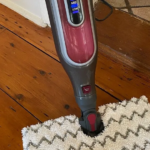
The Shark Steam Mop is a cheap steam mop that does a good job of sweeping and disinfecting floors. This Shark steam mop is a lightweight, simple-to-use steam cleaner.

